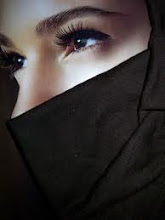Main article: Hindustani classical music
[edit] Carnatic music
Main article: Carnatic music
Galaxy of Musicians by Raja Ravi Varma
depicts Indian women dressed in regional attire playing a variety of
musical instruments popular in different parts of the country.
The present form of Carnatic music is based on historical
developments that can be traced to the 15th - 16th centuries AD and
thereafter. However, the form itself is reputed to have been one of the
gifts bestowed on man by the gods of Hindu mythology. It is one of the
oldest musical forms that continue to survive today.
Carnatic music is melodic, with improvised variations. It consists of a composition with improvised embellishments added to the piece in the forms of Raga Alapana, Kalpanaswaram, Neraval, and, in the case of more advanced students, Ragam Tanam Pallavi.
The main emphasis is on the vocals as most compositions are written to
be sung, and even when played on instruments, they are meant to be
performed in a singing style (known as gāyaki). There are about 7.2 million ragas (or scales) in Carnatic Music, with around 300 still in use today.
Purandara Dasa is considered the father of carnatic music. Sri Tyagaraja, Sri Shyama Shastry and Sri Muthuswami Dikshitar are considered the trinity of carnatic music and with them came the golden age in carnatic music in the 18th-19th century[citation needed].
Noted artists of Carnatic Music include MS Subbulakshmi, Ariyakudi Ramanuja Iyengar (the father of the current concert format), Semmangudi Srinivasa Iyer, TN Seshagopalan and more recently Sanjay Subrahmanyan,Balamuralikrishna, K J Yesudas, TM Krishna, Bombay Jayashri, etc.
Every December, the city of Chennai in India has its six week-long Music Season,
which has been described as the world's largest cultural event. It has
served as the foundation for most music in South India, including folk
music, festival music and has also extended its influence to film music
in the past 100–150 years or so.







0 komentar:
Posting Komentar